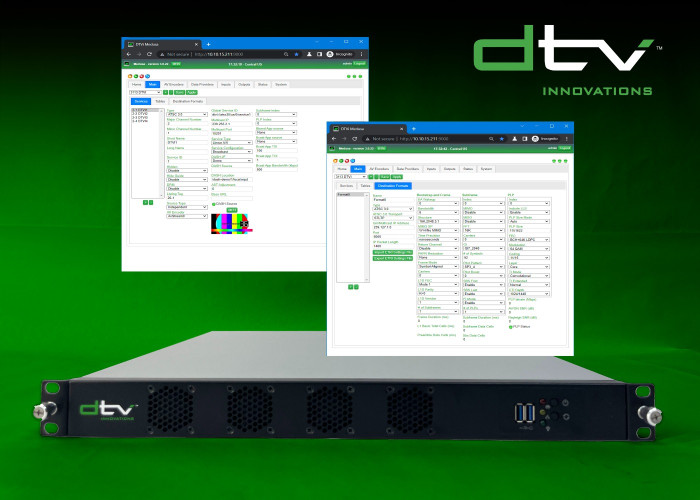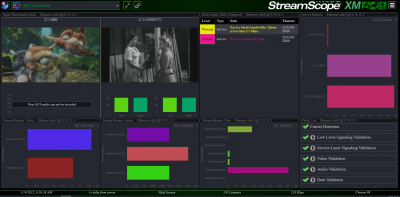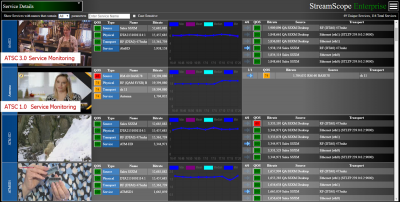An effective strategy for monitoring broadcast audio loudness levels

Author: Bob Pank#
Published 1st August 2012
One of the factors affecting a television viewer’s satisfaction and overall quality of experience is the consistency of the audio level of the programming. Inconsistent loudness levels between channels or between programming and advertisements can ruin a viewer’s television watching experience. Over the past several years, erratic audio levels have become such a source of contention among television viewers worldwide that countries have created guidelines and standards designed to minimize audio-level discrepancies.
Legislation in Europe (EBU, AGCOM) require broadcasters to provide evidence that they are utilizing equipment to properly measure audio loudness levels of content as well as detailed records of the measurements and their adherence to government-mandated standards. As a result, it is imperative for broadcasters and TV stations to establish an effective solution for monitoring audio loudness.
The best way to maintain compliance with regulatory standards and identify potential audio issues is to deploy a comprehensive MPEG-2/MPEG-4 transport stream monitoring system. By identifying problematic content, transport stream monitoring systems allow stations to inform the content source or creator of the error-ridden content and thus ensure that the loudness levels of future content are in line with parameters acceptable to most viewers.
From a user-friendly graphical user interface, engineers can monitor and troubleshoot DTV transport streams to ensure their integrity, reliability, and compliance with all standards. Spot checks are performed after the TV signal has passed through the broadcaster’s processing equipment to verify the level of the audio as it’s heard by viewers. The DTV transport stream monitoring system generates a timestamp and picture thumbnail during potential standards violations to verify whether commercial content was present at the time of the violation, helping engineers more easily determine the source of the error so that they can comply with audio loudness standards.
Errors are categorized according to severity based on regional standards and practices so that engineers can quickly determine which error needs immediate attention. The errors are classified as critical enough to take the transport stream or program off-air, capable of affecting quality of service, or those that are simply missing a component or technically non-conformant. After identifying an error, the system sends meaningful alarms to station engineers via text message or e-mail notifying them of the issue so that they can more rapidly troubleshoot errors as well as analyze and resolve chronic or networkwide issues. Utilizing the error-severity scale as the basis for analysis and alarm generation, engineers can focus on those issues that are most important to viewers, advertisers, and a station’s bottom line.
Some of today’s DTV transport stream monitoring systems can provide continuous real-time logging of loudness measurements within a broadcaster’s end-to-end monitoring workflow, taking standards-based measurements of loudness levels on all audio PIDs in the transport streams being monitored, as well as typical measurement and reporting of short-term and long-term loudness values (LKFS).
Aside from using loudness measurement, error reporting, and export capabilities to identify programming or advertising loudness issues, DTV transport stream systems are a valuable tool for maintaining viewers’ quality of service. The monitoring system’s loudness measurement data offers stations an accurate insight of the viewer experience both in real time and over an extended period of time, indicating programming or advertising commonly associated with loudness issues so that the broadcaster can resolve the audio level issue with the content creator.
Utilizing a sophisticated DTV transport stream monitor like Triveni Digital’s StreamScope™ platform, broadcasters, cable, telco, satellite, mobile TV, and IPTV operators can accurately monitor their audio content to ensure compliance with today’s complex and ever-evolving broadcast standards. By effectively eliminating errors that have the potential to cause service outages, users can deliver a more streamlined television experience to viewers.
Ralph Bachofen is vice president of sales and head of marketing at Triveni Digital. He can be contacted at RBachofen@TriveniDigital.com























